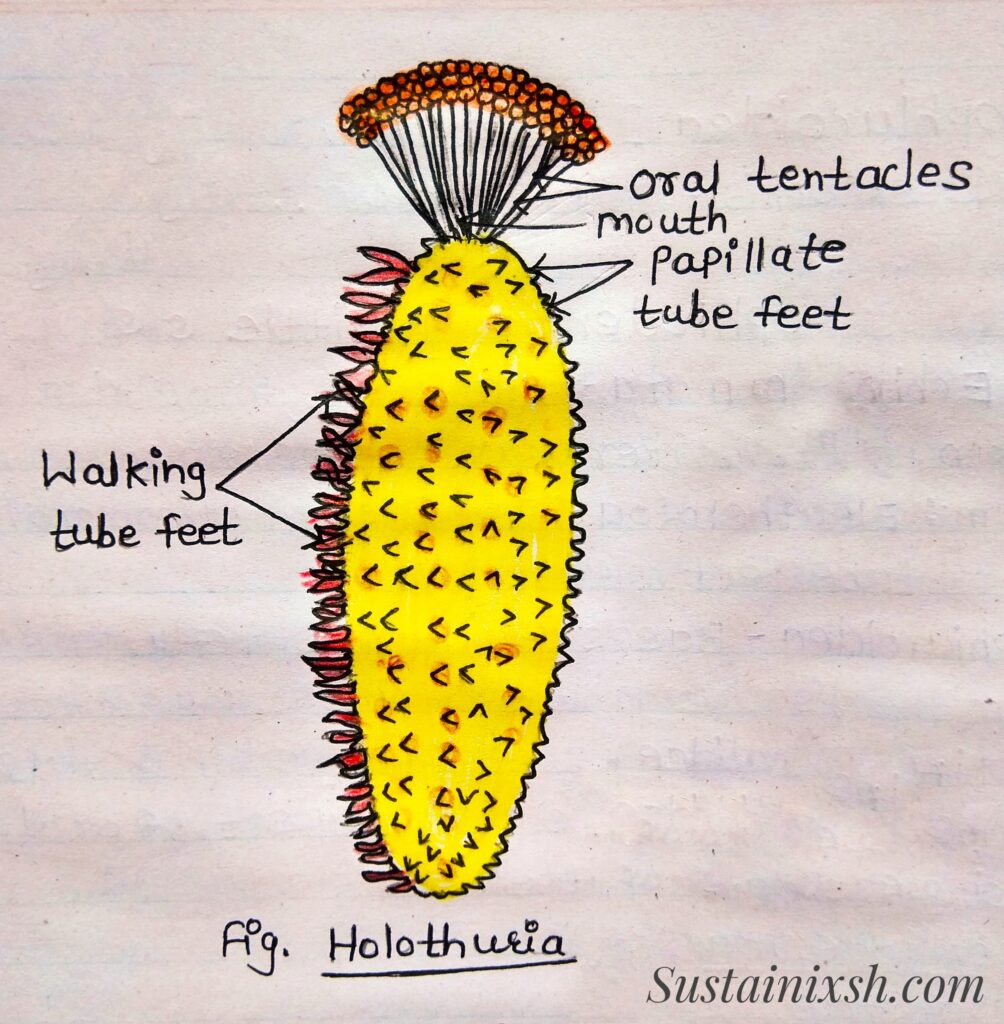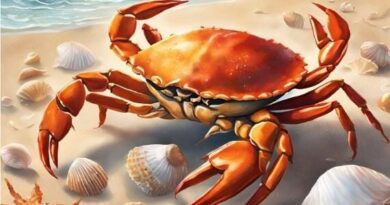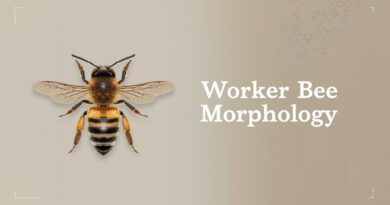To study the classification reasons of the phylum Echinodermata
Phylum – Echinodermata
The name Echinodermata literally means ‘ Spiny skinned animals ‘. Echinodermata name derived from Greek; echinus- spiny, derma – skin. The skin or test of these animals bears prominent spines.
General Characters of Echinodermata :
- Echinoderms are exclusively marine animals. They are gregarious, mostly free-living, slow-moving (creeping), Some are Pelagic and few are fixed.
- Animals show pentamerous radial symmetry & larvae show biradial symmetry.
- Body shape may be star-like, globular spherical, discoidal or elongated, flattened with oral & aboral surfaces.
- Ambulacral grooves are present on the body surface.
- The endoskeleton consists of closely fitted plates forming a shell. These plates are hard and calcareous. The Exoskeleton is made up of movable calcareous spines.
- The body cavity or coelom is large, lined by ciliated peritoneum.
- The presence of a water vascular or ambulacral system is the characteristic feature of echinoderms. Sieve Plate like madreporite is present which is hydropore.
- Tube feet or podia are useful for locomotion, food capture, and respiration.
- Respiration occurs through a variety of structures such as papulae (skin gills), Peristomial gills, genital bursae, and cloacal respiratory trees.
- The circulatory system is reduced and lacunar.
- The heart is absent.
- The excretory system is wanting.
- The nervous system is primitive.
- Sense organs are poorly developed & consist of statocysts, eye spots, and tentacles.
- Sexes are separate, with no sexual dimorphism.
- Reproduction is entirely sexual, and fertilization is external.
• Phylum Echinodermata have two sub- phylum:-
A) Eleutherozoa B) Pelmatozoa
• Eleutherozoa contains four classes:-
1) Asteroidea – e.g. Pentaceros
2) Ophiuroidea – e.g. Ophioderma
3) Echinoidea – e.g. Echinus
4) Holothuroidea – e.g. Holothuria
• Pelmatozoa contains only one class:-
1) Crinoidea – e.g. Antedon
Asteroidea
Class: Asteroidea:- (Aster or asteroeides-star like) e.g. Pentaceros
Phylum: Echinodermata – Radially symmetrical, spiny skin, with a water vascular system.
Sub-phylum: Eleutherozoa – Free-living, mouth on the oral surface, tube feet with suckers.
Class: Asteroidea – Star-shaped body, ambulacral groove with tube feet.
Family: Oreasteridae – Five arms around a stiff, convex, and Often brightly colored body.
Genus: Pentaceros Species: nodosus.
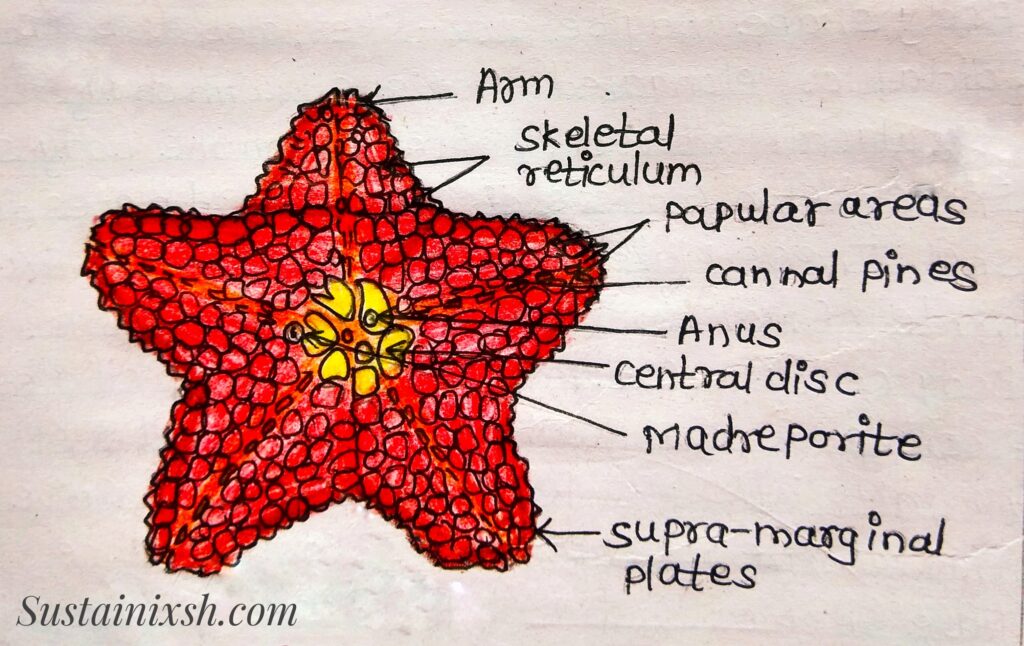
Ophiuroidea
Class: Ophiuroidea (based on genus ophiura, Greek ophis = snake + oura – tail)
e.g. Ophioderma (Brittle star)
Phylum: Echinodermata- Radially symmetrical, spiny skin, with water vascular system.
Sub-phylum: Eleutherozoa – Free living, mouth on oral surface tube feet with suckers.
Class: Ophiuroidea – Bases of arms distinctly marked off from the disc. No ambulacral grooves, anus & intestine.
Family: Ophiodermatidae – Laterally insected & tapering arms, continuous series of closely set of oral papillae,single series of teeth.
Genus: Ophioderma
Species: anitae
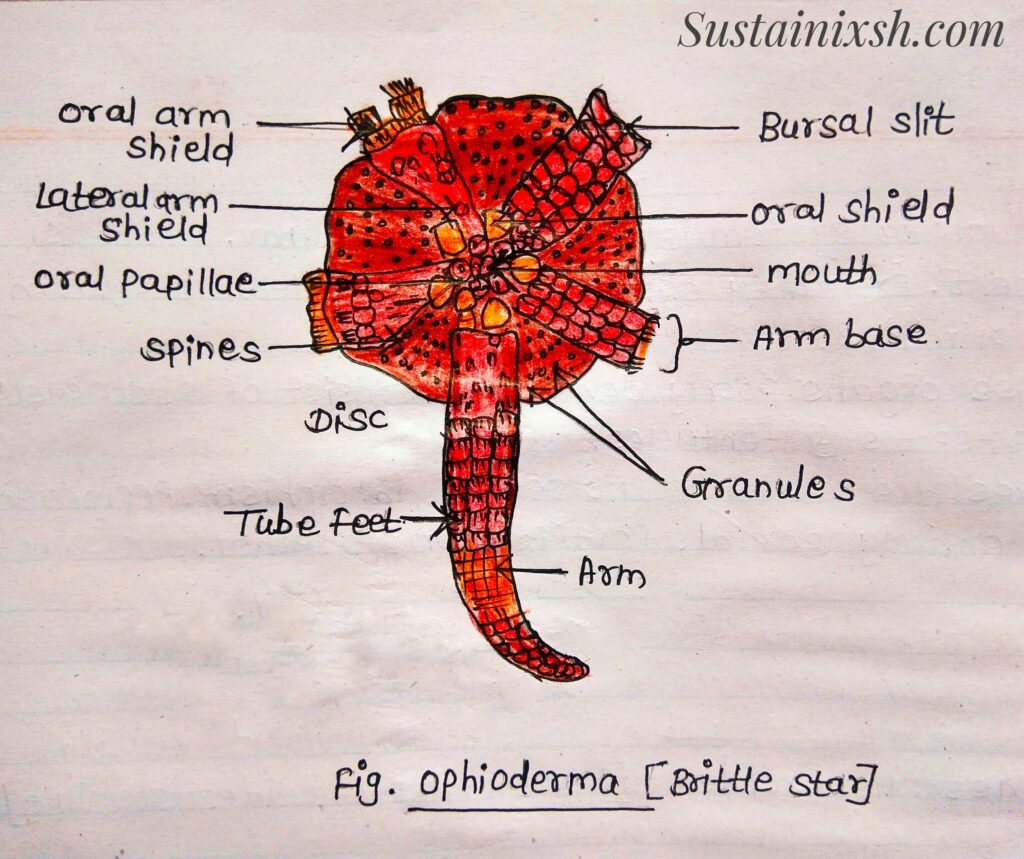
Echinoidea
Class: Echinoidea (ekhinos = spine, sea urchins. hedgehog ) e.g. Echinus (Sea urchin)
Phylum: Echinodermata – Radially symmetrical, spiny skin, with water vascular system.
Sub-phylum: Eleutherozoa – Free living, mouth on oral surface, tube feet with suckers.
Class: Echinoidea – Spherical body, enclosed in shell. No ambulacral grooves, anus.
Family: Echinidae – Pedicellariae are globiferous with 1 or 2 pairs of lateral. Teeth, ambulacral plates are compound.
Genus: Echinus
Species: esculentus
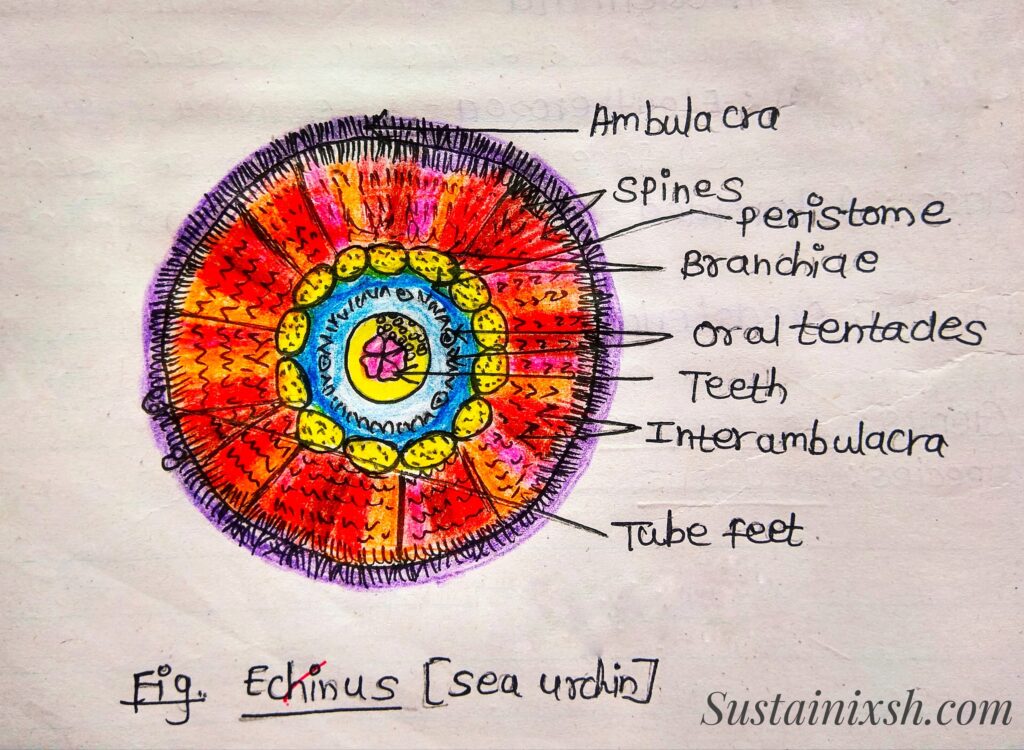
Holothuroidea
Class: Holothuroidea- (Holothurum, holos – whole + thureoides – oblong shield / door) e.g. Holothuria
Phylum: Echinodermata – Radially symmetrical,spiny skin, with water vascular system.
Sub-phylum: Eleutherozoa– Free living, mouth. on oral surface, tube feet with suckers.
Class: Holothuroidea – Cylindrical body, elongated in oral-aboral axis, anus absent.
Family: Holothuriidae – Thick fleshy body, several rows of tube feet, able to eject a mass of sticky threads i.e. cuvierian tubules to distract predators.
Genus: Holothuria
Species: nigra
